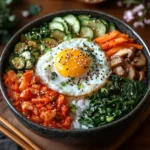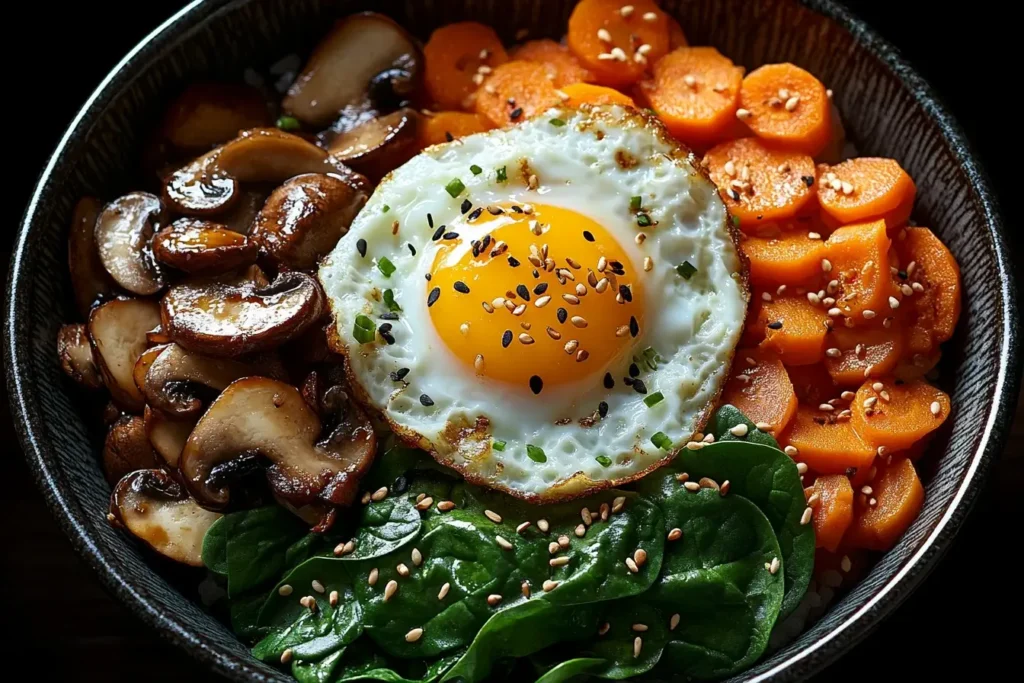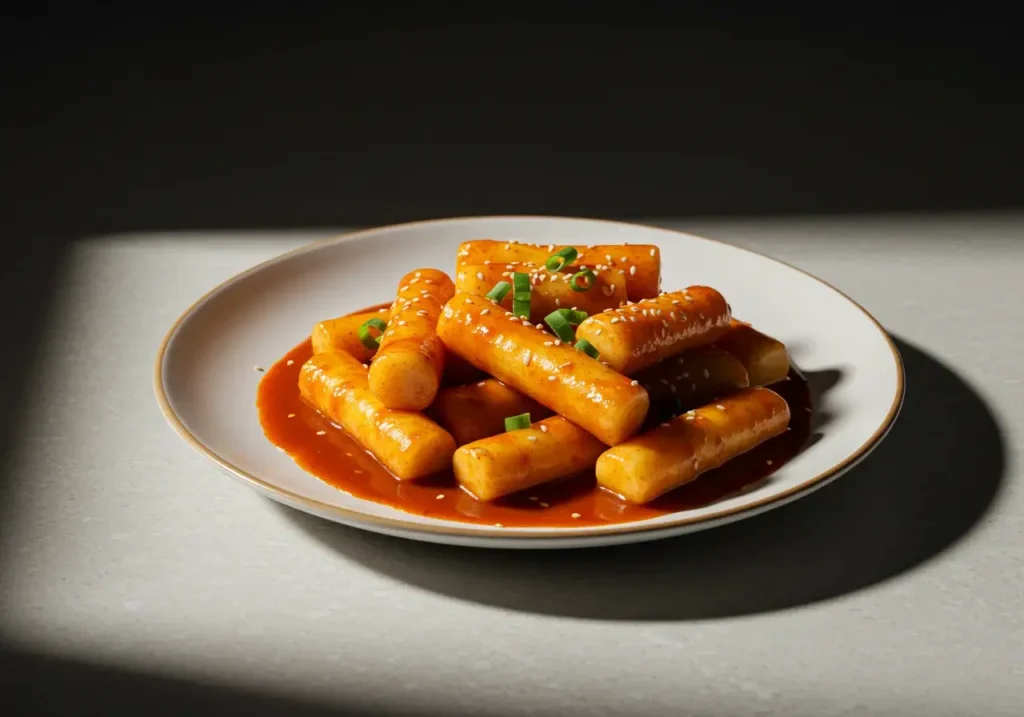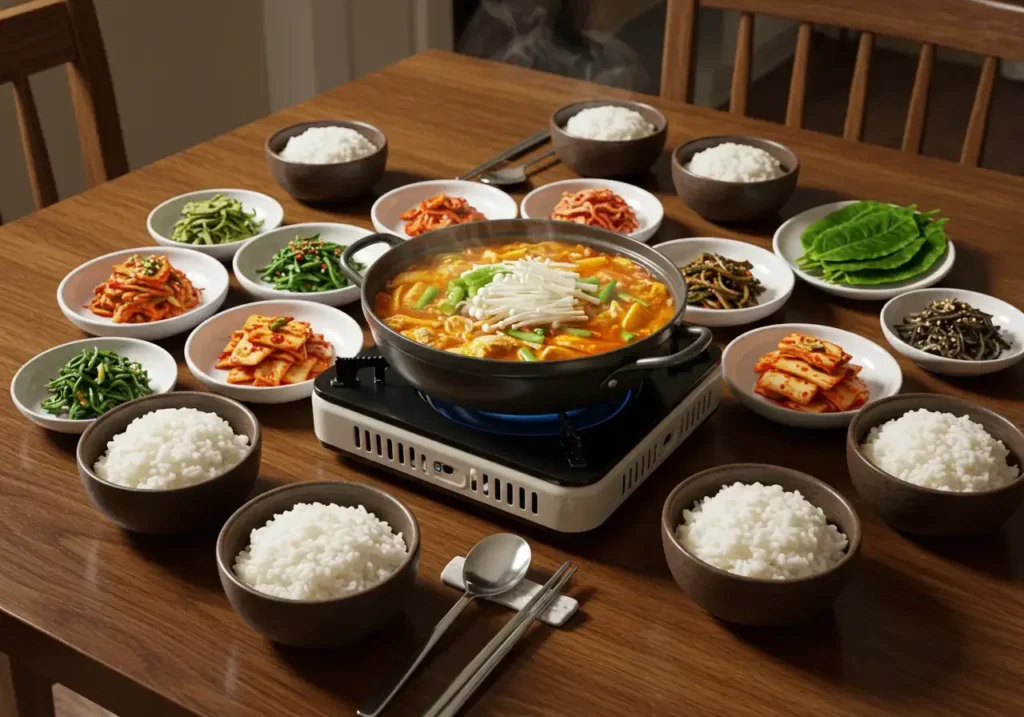Korean cuisine is a captivating blend of vibrant flavors, time-honored traditions, and versatile ingredients. From steaming bowls of soup to sizzling rice dishes, it offers something for everyone—whether you’re a seasoned foodie or new to the world of Korean recipes. In this article, we’ll dive deep into the essence of Korean cooking, exploring must-try dishes, side dishes, street food, and tips for bringing authentic Korean flavors to your table.
Introduction to Korean Cuisine
The Rich Heritage of Korean Recipes
Korean cuisine is more than just food—it’s a celebration of history, culture, and community. Rooted in centuries-old traditions, it brings together regional ingredients and techniques that have evolved over time. Meals are built around bap (rice), guk (soup), and an array of banchan (side dishes), creating a balance of flavors and nutrients in every bite.
One of the defining characteristics of Korean recipes is their emphasis on harmony. The principle of umami, derived from fermented pastes like doenjang (soybean paste) and gochujang (chili paste), is complemented by the fresh crunch of vegetables and the hearty goodness of proteins like chicken, beef, or seafood.
Unique Ingredients in Korean Cooking
Ever wonder what makes Korean food so distinct? It’s the ingredients! Staples like gochugaru (Korean red pepper flakes) give dishes their signature kick, while sesame oil adds a nutty aroma that’s hard to resist. Seaweed, tofu, and fermented vegetables such as kimchi contribute to its nutrient-rich profile, making it both flavorful and healthy.
Rice and noodles are central to many meals, with toppings ranging from stir-fried vegetables to marinated proteins. Pairing these with soups or stews like jjigae ensures a comforting dining experience that’s as nourishing as it is delicious.
With the foundation of Korean cuisine in mind, we’ll now explore some of the most iconic dishes you can easily recreate at home.
Must-Try Korean Dishes for Every Palate
Savory Staples: Bibimbap and Beyond
Print
Bibimbap: A Traditional Korean Rice Bowl
- Total Time: 25 minutes
- Yield: 2 servings 1x
Description
Bibimbap is a classic Korean rice dish loaded with fresh vegetables, a fried egg, and a touch of gochujang (Korean chili paste). Perfect for a healthy, flavorful meal, it’s easy to customize and a joy to prepare.
Ingredients
- 2 cups cooked white or brown rice
- 1 cup spinach, blanched
- 1 cup bean sprouts, blanched and seasoned with sesame oil
- 1 medium carrot, julienned and sautéed
- 1 zucchini, julienned and sautéed
- 4 oz shiitake mushrooms, sliced and sautéed
- 1 fried egg (per serving)
- 3 tbsp gochujang (Korean chili paste)
- 1 tbsp sesame oil
- Sesame seeds, for garnish
Instructions
- Prepare all vegetables: blanch spinach and bean sprouts, and sauté carrot, zucchini, and mushrooms in sesame oil.
- Place cooked rice in the center of a large bowl.
- Arrange prepared vegetables around the rice in separate sections.
- Top the rice with a fried egg.
- Drizzle gochujang and sesame oil over the dish.
- Garnish with sesame seeds and mix everything before eating.
Notes
- You can substitute tofu or chicken for added protein.
- Adjust the amount of gochujang based on your spice tolerance.
- Use leftover rice for the best texture.
- Prep Time: 10 minutes
- Cook Time: 15 minutes
Nutrition
- Serving Size: 1 bowl
- Calories: 425
- Sugar: 5g
- Sodium: 650mg
- Carbohydrates: 60g
- Fiber: 5g
- Protein: 15g
- Cholesterol: 190mg

No conversation about Korean recipes is complete without mentioning bibimbap. This colorful rice dish is a medley of vegetables, a fried egg, and marinated meat (or tofu for vegetarians), all topped with a dollop of gochujang (Korean chili paste). It’s a harmonious mix of flavors and textures that caters to both traditionalists and modern foodies.
Recipe: Easy Bibimbap
Ingredients
- 2 cups cooked white or brown rice
- 1 cup spinach, blanched
- 1 cup bean sprouts, blanched and seasoned with sesame oil
- 1 medium carrot, julienned and sautéed
- 1 zucchini, julienned and sautéed
- 4 oz shiitake mushrooms, sliced and sautéed
- 1 fried egg (per serving)
- 3 tbsp gochujang (Korean chili paste)
- 1 tbsp sesame oil
- Sesame seeds, for garnish
Directions
- Prepare all vegetables: blanch the spinach and bean sprouts, then sauté the carrot, zucchini, and mushrooms separately in a drizzle of sesame oil.
- Assemble the cooked rice in the center of a large bowl.
- Arrange the prepared vegetables around the rice in neat sections.
- Add the fried egg on top of the rice.
- Drizzle gochujang and sesame oil over the dish.
- Garnish with sesame seeds before serving.
- Mix everything together just before eating for the best flavor combination.
Preparation Time: 10 minutes | Cooking Time: 15 minutes | Total Time: 25 minutes
For more ideas on how to elevate your cooking skills, check out our guide to making the perfect Cuban pizza crust.
Another staple is Japchae, a stir-fried noodle dish made from sweet potato glass noodles. Tossed with sesame oil, soy sauce, and a vibrant mix of veggies, it’s an irresistible blend of savory and slightly sweet notes.
For those exploring Korean flavors for the first time, dishes like dakgalbi (spicy stir-fried chicken) are a fantastic entry point. Packed with tender chicken, cabbage, and gochugaru (red chili flakes), it offers a satisfying kick.
Soups and Stews: A Warm Hug in a Bowl
Korean soups and stews, known as guk and jjigae, are the ultimate comfort food. A standout is Doenjang Jjigae, a soybean paste stew loaded with tofu, zucchini, and mushrooms. It’s a simple yet hearty dish perfect for chilly days.
Looking for comfort food alternatives? Try our recipe for Crockpot Angel Chicken.
Seafood enthusiasts will enjoy Haemul Sundubu Jjigae, a spicy soft tofu stew brimming with shrimp, clams, and squid. Its fiery broth, seasoned with garlic and gochugaru, leaves a lasting impression.
These dishes exemplify how Korean recipes marry bold flavors with wholesome ingredients to create meals that nourish both body and soul.
Vegetarian-Friendly Korean Recipes
Many Korean recipes are naturally vegetarian or easily adaptable. Take Bibim Naengmyeon, for instance—a refreshing cold noodle dish with a tangy sesame soy dressing. Pair it with banchan like seasoned spinach or stir-fried bean sprouts for a delightful meal.
Another gem is Gyeran Mari, or Korean rolled omelet. This dish, made with eggs, finely chopped vegetables, and a touch of sesame oil, is simple to prepare and perfect for lunchboxes.
Exploring Side Dishes (Banchan)
Kimchi: The Heart of Korean Cuisine
Kimchi, a fermented cabbage side dish, is the cornerstone of Korean meals. Made with chili flakes, garlic, and ginger, it strikes a balance between spicy, tangy, and umami flavors. Not only is it a flavor powerhouse, but it’s also loaded with probiotics, making it a nutritional superstar.
Want to make your own? It’s simpler than you think—mix napa cabbage with the spicy paste, let it ferment for a few days, and voilà! Your homemade kimchi is ready to accompany rice, noodles, or even soups.
Simple and Flavorful Vegetable Side Dishes
Side dishes, or banchan, elevate any Korean meal. Namul (seasoned vegetables) are quick and healthy options. For instance, blanched spinach seasoned with sesame oil and soy sauce is an effortless yet flavorful addition to your plate.
For vegetable lovers, our Broccoli and Cauliflower Salad recipe could be a great addition to your table.
Try Gamja Jorim, a braised potato dish cooked in a sweet soy glaze. It’s sticky, slightly sweet, and pairs beautifully with steamed rice.
Preparing Traditional Korean Pancakes (Jeon)

Korean pancakes, or Jeon, are savory treats made with a batter of flour, water, and eggs. Popular varieties include Pajeon (scallion pancakes) and Kimchi Jeon, each crisped to perfection in sesame oil.
Serve them with a dipping sauce of soy sauce, vinegar, and chili flakes for a snack that’s as fun to eat as it is to make.
For more tips on using unique ingredients in everyday cooking, explore Haven of Recipes, a helpful resource for culinary inspiration!
Korean Street Food Favorites
Tteokbokki: Spicy Rice Cakes Done Right

One of the most iconic Korean recipes is tteokbokki, a street food classic made from chewy rice cakes simmered in a sweet and spicy sauce. The sauce, a blend of gochujang, sugar, and garlic, perfectly coats the rice cakes, creating a dish that’s equal parts comforting and addictive.
Want more snack options? Try our Chocolate Chip Pancake recipe.
Tteokbokki (Spicy Rice Cakes)
Ingredients
- 1 lb cylindrical rice cakes (tteok)
- 4 cups water or anchovy stock
- 1/4 cup gochujang (Korean chili paste)
- 1 tbsp gochugaru (Korean chili flakes)
- 2 tbsp sugar
- 1 tbsp soy sauce
- 1 boiled egg (optional)
- 1/2 cup fish cakes, sliced (optional)
- 1 green onion, chopped
Directions
- In a large pan, bring water or anchovy stock to a gentle boil.
- Stir in gochujang, gochugaru, sugar, and soy sauce until fully dissolved.
- Add rice cakes to the boiling liquid and simmer for 8–10 minutes, stirring occasionally to prevent sticking.
- If using fish cakes and boiled eggs, add them halfway through cooking.
- Once the sauce thickens and the rice cakes are soft, garnish with chopped green onions.
- Serve hot as a standalone snack or side dish.
Preparation Time: 10 minutes | Cooking Time: 15 minutes | Total Time: 25 minutes
Traditionally served with fish cakes and boiled eggs, tteokbokki is now a staple at food stalls and home kitchens alike. For a unique twist, add mozzarella cheese for a gooey, indulgent experience!
Gimbap: Korea’s Answer to Sushi Rolls
If you’re looking for a quick, portable snack, gimbap (or kimbap) is your go-to. These seaweed rice rolls are filled with a variety of ingredients like spinach, carrots, and pickled radish. For a protein boost, you can include strips of egg, grilled chicken, or tofu.
Unlike sushi, gimbap typically skips raw fish, making it a great option for beginners. Packed with flavor and nutrition, these rolls are perfect for picnics, lunchboxes, or even an on-the-go meal.
Savory Snacks You Can Make at Home
Korean street food also includes delightful snacks like Hotteok, sweet pancakes filled with brown sugar, cinnamon, and nuts. For a savory option, try Twigim, Korea’s take on tempura, featuring fried vegetables and seafood in a light batter.
For more inspiration on street-food-style dishes, check out Haven of Recipes, where you’ll find plenty of creative ideas to replicate at home.
Healthy Korean Recipes You’ll Love
Korean Salad Recipes: Fresh and Zesty
For a lighter take on Korean recipes, salads are an excellent choice. A classic example is Oi Muchim, a spicy cucumber salad dressed in sesame oil, vinegar, and chili flakes. It’s refreshing, tangy, and ready in minutes.
For additional light meal ideas, read about Spinach Pesto and its ingredients.
Another favorite is Kongnamul Muchim, a seasoned soybean sprout salad. This dish pairs well with rice and is rich in vitamins and minerals, making it a nutritious addition to any meal.
Protein-Packed Dishes with Chicken and Seafood
Korean cuisine offers a variety of protein-rich dishes that are both healthy and flavorful. Dakdoritang, or spicy braised chicken, is a hearty stew loaded with potatoes, carrots, and chili-infused broth. It’s a one-pot wonder that satisfies without feeling heavy.
Seafood lovers will enjoy Jjampong, a spicy seafood noodle soup packed with shrimp, squid, and clams. Its vibrant red broth, flavored with garlic and gochugaru, is both invigorating and delicious.
For a deeper dive into nutrient-packed meals, explore more recipes at Haven of Recipes. You’re bound to find inspiration for your next healthy Korean dish!
Easy Korean Recipes for Beginners
Simple Korean Soups to Start With
If you’re new to Korean recipes, starting with soups is a great way to ease into the cuisine. Miyeok Guk, a seaweed soup, is incredibly simple yet flavorful. Made with just dried seaweed, soy sauce, garlic, and your choice of protein like chicken or tofu, it’s a comforting dish that pairs beautifully with steamed rice.
Another beginner-friendly option is Dak Gomtang, a mild chicken soup made with bone-in chicken, green onions, and garlic. It’s light, nourishing, and perfect for learning the balance of flavors in Korean cooking.
Rice and Noodle Recipes for Everyday Cooking
For those who love rice dishes, Kimchi Fried Rice is an easy and versatile recipe. Toss leftover rice with kimchi, a touch of sesame oil, and a fried egg on top for a meal that’s quick and satisfying.
Kimchi Fried Rice
Ingredients
- 2 cups cooked rice (day-old rice works best)
- 1 cup kimchi, chopped
- 1/2 onion, diced
- 1 tbsp sesame oil
- 1 tbsp vegetable oil
- 2 tbsp kimchi juice (optional)
- 1 egg (per serving)
- 1 green onion, chopped, for garnish
- Sesame seeds, for garnish
Directions
- Heat vegetable oil in a skillet or wok over medium heat. Add diced onion and stir-fry until translucent.
- Stir in chopped kimchi and cook for 2–3 minutes until fragrant.
- Add rice and mix well, ensuring the rice is evenly coated with the kimchi.
- Drizzle sesame oil and, if desired, add kimchi juice for extra flavor. Stir-fry for another 2–3 minutes.
- In a separate pan, fry eggs sunny-side up.
- Serve the fried rice topped with an egg, garnished with chopped green onion and sesame seeds.
Preparation Time: 10 minutes | Cooking Time: 10 minutes | Total Time: 20 minutes
Noodles are another approachable option. Try Jjajangmyeon, a dish featuring chewy wheat noodles in a savory black bean sauce. It’s hearty, flavorful, and surprisingly simple to prepare at home. These dishes show how Korean recipes can be quick and accessible for cooks of all skill levels.
Cooking Tips and Tricks for Authentic Korean Flavors
Choosing the Right Ingredients for Korean Recipes
Authentic Korean cooking starts with the right ingredients. Keep essentials like gochujang (red chili paste), doenjang (soybean paste), and sesame oil stocked in your pantry. These staples form the backbone of most Korean recipes and add depth and complexity to your dishes.
Explore how to select the best-quality chicken for your dishes with our guide to the best chicken cuts for slow cooking.
When shopping for fresh produce, opt for seasonal vegetables like napa cabbage, zucchini, and spinach. These ingredients are commonly used in Korean dishes and ensure your meals stay fresh and flavorful.
Tips for Balancing Flavors Like a Pro
Korean cuisine thrives on the perfect balance of spicy, salty, sweet, and savory flavors. To achieve this at home, taste as you go and adjust seasonings to suit your preference. A pinch of sugar can soften the heat of gochugaru, while a dash of vinegar brightens the overall flavor profile.
Don’t be afraid to experiment with side dishes, or banchan. Even simple additions like seasoned tofu or blanched greens can make your meals feel more authentic and complete.
With these tips, you’ll be creating restaurant-quality Korean recipes in no time!
Modern Fusion Korean Recipes
Korean Tacos: A Bold Blend of Flavors
Modern chefs worldwide have embraced the versatility of Korean recipes, creating fusion dishes that are both unique and mouthwatering. Korean tacos, for example, combine the bold flavors of Korean BBQ with soft tortillas, making a handheld delight. Fill your taco with marinated bulgogi beef or spicy chicken, then top it off with kimchi and a drizzle of gochujang mayo for a memorable bite.
These tacos are an excellent choice for casual gatherings or a fun twist on Taco Tuesday. The combination of smoky, spicy, and tangy flavors will leave your guests raving.
Kimchi Grilled Cheese: A Comfort Food Classic
Another innovative fusion recipe is Kimchi Grilled Cheese, which pairs gooey melted cheese with the tangy kick of kimchi. This quick and satisfying dish is perfect for lunch or a comforting snack. Use sourdough or brioche for the best results, layering a generous portion of well-drained kimchi between slices of your favorite cheese.
These creative takes on Korean recipes show how traditional ingredients can inspire exciting new dishes that appeal to a global palate.
Korean Recipes for Entertaining Guests
Korean BBQ at Home: A Fun and Interactive Experience

Hosting a Korean BBQ night at home is a surefire way to impress your guests. Offer a selection of proteins like chicken, shrimp, or beef, marinated in traditional Korean sauces. Pair these with an array of banchan (side dishes) like kimchi, pickled radishes, and seasoned bean sprouts.
Set up a tabletop grill or use a griddle, allowing everyone to cook their meat to their liking. This hands-on dining experience is not only delicious but also highly interactive, making it a perfect choice for special occasions.
Desserts to Complete the Meal
Korean desserts are an elegant way to end your meal. Serve Hotteok (sweet pancakes filled with brown sugar and cinnamon) or Bingsu, a shaved ice dessert topped with fruit and sweet red beans. These treats provide a delightful balance to the bold flavors of the main meal.
For more inspiration on hosting a Korean-themed gathering, check out recipes that complement traditional Korean cuisine, such as Haven of Recipes.
Conclusion
Korean cuisine is a treasure trove of flavors, textures, and traditions that can be adapted to suit any taste or occasion. From classic staples like bibimbap and kimchi to modern fusion dishes like Korean tacos, there’s no shortage of inspiration to explore. Whether you’re a beginner experimenting with simple Korean recipes or an experienced cook hosting a Korean BBQ, the possibilities are endless.
Dive into the vibrant world of Korean cooking, and let its bold and comforting flavors transform your kitchen into a global culinary destination. Happy cooking!

